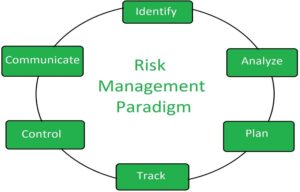How to calculate the corpus needed for your child’s education

The amount of money you will need for your child’s education will depend on a number of factors, including the type of school they attend, the cost of living in your area, and their desired field of study. However, there are some general guidelines that you can follow to get a sense of how much you need to save.
The average cost of a four-year college education in India is between Rs. 18-20 lakhs. However, this can vary widely depending on the type of school and the city where it is located. For example, a private university in a major city can cost significantly more than a public university in a smaller town.
However, it is important to keep in mind that you may not need to save this much money if your child qualifies for financial aid or scholarships. Additionally, you may be able to help your child reduce the cost of education by choosing a less expensive school or by living at home while attending college.
Here are some tips for saving for your child’s education:
Starting to save early for your child’s education is a smart financial move that offers several advantages. Here’s an expanded explanation of the points mentioned:
Begin Early: The power of compounding makes early savings extremely valuable. When you start saving for your child’s education early, your investments have more time to grow. Even small contributions made over many years can accumulate significantly. This can reduce the financial burden on you when your child is ready for higher education.
Set Clear Goals: Determine how much money you’ll need to cover your child’s education expenses. Consider factors like tuition fees, living costs, and potential inflation. Having a specific savings goal in mind allows you to create a realistic budget and investment plan.
Invest Wisely: To make the most of your savings, consider investing in vehicles that offer higher returns than traditional savings accounts. High-yield savings accounts, mutual funds, and exchange-traded funds (ETFs) can provide opportunities for your money to grow faster. However, keep in mind that investments come with varying degrees of risk, so choose investments that align with your risk tolerance and time horizon.
Child Education Plans: Child plans are designed to address the unique needs of parents who want to save for their child’s education. These plans typically offer structured savings options with benefits such as disciplined savings, tax benefits, and guaranteed returns. They provide a dedicated and systematic approach to building an education fund for your child, ensuring that financial resources are readily available when needed.
How to calculate your child’s education expenses?
To calculate the corpus needed for your child’s education, you will need to set up a child education planner and consider the following factors:
- The current cost of education
- The expected inflation rate
- The number of years until your child starts college
- Your desired lifestyle for your child during college
Once you have considered these factors, you can use the following formula to calculate the corpus needed:
Corpus = Current cost of education * (1 + Inflation rate)^Number of years until college * (1 + Desired lifestyle factor)
For example, suppose the current cost of education is ₹10 lakh, the expected inflation rate is 6%, the number of years until your child starts college is 10, and you want your child to have a comfortable lifestyle during college. In this case, the corpus needed would be:
Saving for your child’s education is an important investment in their future. By following these tips, you can help ensure that they have the financial resources they need to achieve their academic goals.







